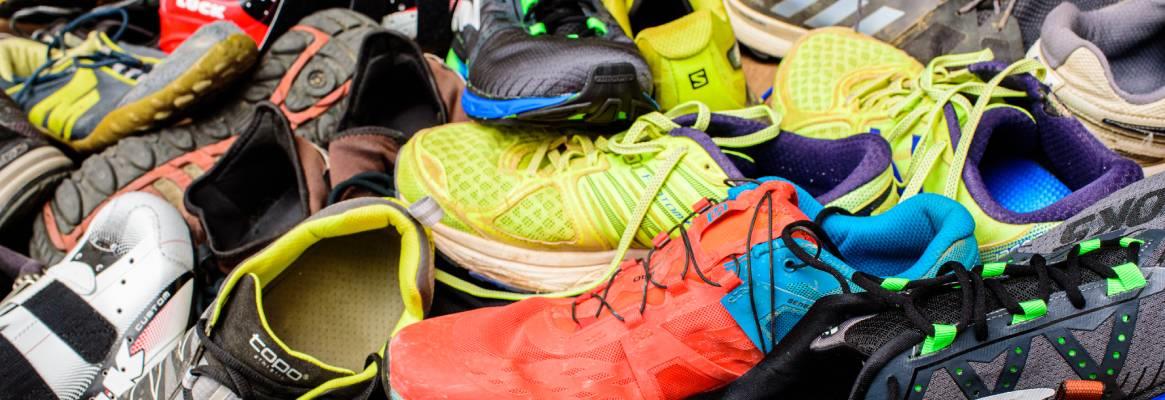Sustainability is the new buzzword and brands cannot remain far behind in adopting this concept--this being need of the hour. Certain brands have taken the onus on themselves to make their products more sustainable but there is lot which needs to be done! It is time brands convert 100 per cent of their products sustainable by modifying their manufacturing processes.
It is no secret that within many industries all around the economy, a shift towards environmental manufacturing processes is starting to take place.
It is extremely difficult for any major brand to carry on using harmful processes without incurring the wrath of the public eye. That is why in the trainer industry, it is becoming more and more common to see brands gaining popularity that base their entire business model on environmental sustainability.
Many brands are finding new ways to create a smaller range of products by using materials such as pineapple leaves, merino wool, or apple skin that comes from the waste from the apple juice industry. One brand allows you to return the shoes to the company when you have finished using them so that they can be properly recycled.
There are many examples of trainer brands who are working in this way now, but the thing they all have in common is that they have to charge more for their product than the likes of Nike or Adidas. It is very rare to find a truly sustainable and guilt-free pair of trainers for under 100, as it simply costs more to produce them in this way.
Not only are new types of materials being used, but shoes are often now coming with a humanitarian interest attached to them such as donating shoes to migrants and refugees or providing the option to send a tip directly to the manufacturer of the shoes in Pakistan.
This shift is important because shoe manufacturing is one of the most wasteful clothing processes that exist in the modern age. It is thought that over 300 million pairs of trainers are thrown out every year and the majority of these are made from materials that are famously damaging to the environment, such as nylon, synthetic rubber, and plastic. All of these materials have to be made using crude oil that is environmentally damaging to harvest.
Not only are the materials used very damaging, but the manufacturing process too. It is extremely energy-intensive with injection moulding, foaming, heating, and binding with chemical solvent.
As was found by an MIT-led life-cycle assessment, each pair of traditional trainers accounts for 30 pounds of carbon dioxide emissions released into the atmosphere. That’s the equivalent of keeping a light on for a week straight or burning a gallon and a half of petroleum.
Many retail experts now believe that younger people are willing to pay more money for an eco-friendly training shoe rather than one they know has been/will be harmful to the planet. That is why the business model of these more sustainable companies is succeeding.
Major corporations such as Nike and Adidas are of course not blind to these changing times, they do after all have the human and financial resources to do anything they choose. Both companies have begun releasing some trainers made with recycled materials such as harvested ocean plastic, which is a step in the right direction. Adidas teamed up with Parley to create a trainer made from marine plastic waste and illegal deep-sea gillnets that are often used for over-fishing practices.
In 2018, Nike was recognised by the Textile Exchange as the brand using the most recycled polyester in the industry for the sixth year in a row, among other achievements. It has been argued by Tansy Hoskins, author of a book called Foot Work: What Your Shoes Are Doing To The World, that these awards are not in line with their scale of production. Nike using more recycled polyester than anyone else can still mean that 90 per cent of the shoes they produce are not made using recyclable materials at all.
Many large companies within certain industries are adept at perpetuating an environmentally responsible public image without making many drastic changes to their way of manufacturing or conducting business.
The suggestion that only a small percentage of Nike and Adidas’ production has been made sustainable or recyclable implies that they are doing just that, but they are relying on the popularity of their brand.
If the trend of younger consumers starting to favour an environmentally sustainable product continues and grows, there could come a point where major companies have their hands forced and have no choice but to pitch towards the same business model going forward.
About the author: Euan Burns is a features editor at Origym Centre of Excellence, which provides high-quality personal training courses and packages.
References:
https://www.theguardian.com/fashion/gallery/2020/jul/02/ethical-trainers-from-pineapple-leather-to-recycled-plastic
https://www.bbc.com/culture/article/20200303-the-nasty-truth-about-trainers
https://www.technologyreview.com/2013/08/21/252466/a-sneakers-carbon-footprint/










Comments